#ofelia guilmáin
Explore tagged Tumblr posts
Text

Little Red Riding Hood and Tom Thumb vs. the Monsters | 1962
#Little Red Riding Hood and Tom Thumb vs. the Monsters#skull#Caperucita y Pulgarcito contra los monstruos#Ofelia Guilmáin#witchcraft#sorcery#witch#Mexican horror#hammersmith horror#owl#snow white#magic potion#fire
494 notes
·
View notes
Text




El hombre y el monstruo (1959)
#el hombre y el monstruo#ofelia guilmáin#enrique rambal#1950s horror#1950s movies#1959#rafael baledón#mexican gothic#horrorgifs#gif#gifs#my gifs
71 notes
·
View notes
Text
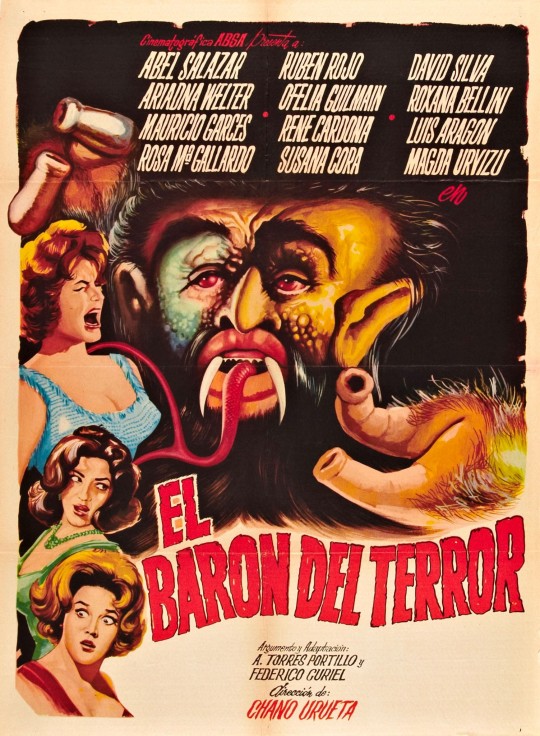
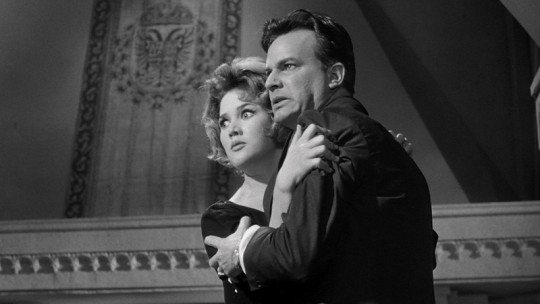



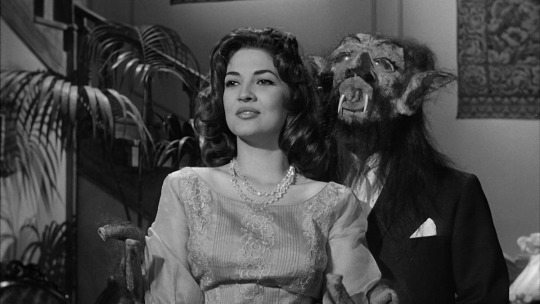

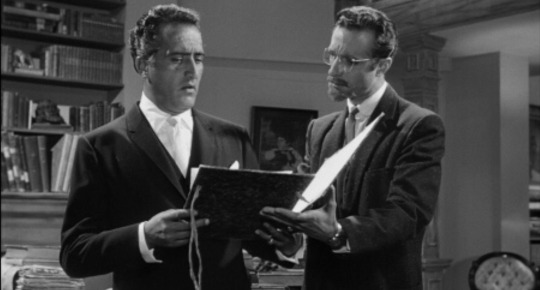
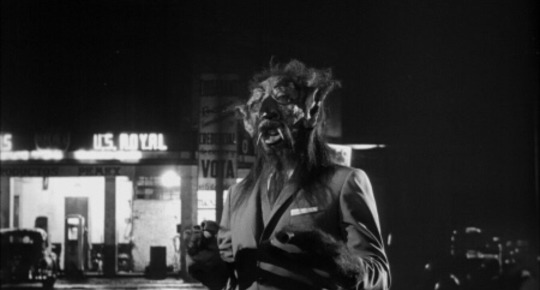

El barón del terror (The Brainiac, 1962)
"The characteristics are identical. There's no doubt we're dealing with the same criminal."
"He also has a great deal of knowledge about anatomy."
"Is that what he uses his anatomical knowledge for? To become a dangerous maniac?"
#el barón del terror#the brainiac#mexican cinema#horror film#1962#chano urueta#federico curiel#adolfo lópez portillo#abel salazar#ariadne welter#david silva#germán robles#luis aragón#ofelia guilmáin#rené cardona#mauricio garcés#rubén rojo#carlos nieto#carlota solares#magda donato#absolute cheesy nonsense of the dumbest kind. 17th century magic man is executed for heresy by the inquisition�� but rides a comet back#to life in modern day Mexico to take revenge on the descendants of his persecutors‚ inexplicably taking the form of a rubber headed monster#man to suck out their brains with his weird claw tube hands. that the rubber monster head inflates and deflates with the presumed breathing#of the beast appears to have been a conscious production decision which absolutely baffles me bc it looks absurd. multiple scenes take#place in front of huge blown up stock photos of locations bc the crew presumably couldn't even afford to go outside. the cops on the case#are bumbling fools who still somehow save the day by turning up in the nick of time armed with goddamn flamethrowers#truly kind of terrible but so charmingly nuts that you can't help but kind of get swept along and enjoy the ride#our villain even has a special fancy dish he keeps the collected brain bits in and routinely has to excuse himself to have a spoonful#ig the brains sustain him or whatever? but i don't think that ever got explained. why would it? this is the goddamn brainiac
9 notes
·
View notes
Text

El ángel exterminador (1962)
#Xavier Loyá#Xavier Loya#quotes#1962#Ofelia Guilmáin#Ofelia Guilmain#El ángel exterminador#The Exterminating Angel
4 notes
·
View notes
Text




Brianiac Attack From Behind 😈
The Brainiac (1962) 🧠🩸
#the braniac#horror#mexico#ofelia guilmáin#rené cardona#horror movies#horror films#horror lover#horror community#horror girl#monsters#brain eater#old horror#cult movies#Baron Vitelius d'Estera#abel salazer
2 notes
·
View notes
Text
The Exterminating Angel (Luis Buñuel, 1962)
Cast: Silvia Pinal, Enrique Rambal, Claudio Brook, José Baviera, Augusto Benedico, Antonio Bravo, Jacqueline Andere, César de Campo, Rosa Elena Durgel, Lucy Gallardo, Enrique García Álvarez. Ofelia Guilmáin, Nadia Haro Oliva, Tito Junco, Xavier Loyà, Xavier Massé, Ofelia Montesco, Luis Beristáin, Patricia Morán, Patricia de Morelos, Bertha Moss. Screenplay: Luis Buñuel, Luis Alcoriza. Cinematography: Gabriel Figueroa. Production design: Jesús Bracho. Film editing: Carlos Savage. Music: Raúl Lavista. The Exterminating Angel teeters occasionally on the brink of heavy-handed satire – the sheep entering the now-blocked church at the film’s end, for example – but somehow Luis Buñuel always recovers his balance. I think it’s because he knows that surrealism – the movement which gave him birth – must always be underpinned by a dutiful semi-documentary realism, that we must never be entirely sure whether the improbable characters we’re encountering and the unlikely events we’re witnessing are external to us or are products of our own unstable minds. Take the déjà vu effect near the beginning of the film, when we witness the guests arriving at the mansion of the Nobiles and ascending the staircase only to watch the same scene repeated almost immediately from a somewhat different angle. For a moment we wonder if the projectionist has put on the wrong reel or the film editor has forgotten to excise the repeated scene. Or perhaps we wonder if we dozed off for a second and missed something that would explain the repetition. But no, the director must be playing with us, we conclude. That, or we’re trapped in his own world, just as he is to trap the guests inside a room later, never bothering to provide an explanation of the force that keeps them there. It’s one of those tricks that can only work in the movies, where we, like the house guests, have gathered and found ourselves unable to escape. We can choose to escape from the experience The Exterminating Angel presents to us – nothing prevents us from leaving the theater or turning off the video – but we don’t. So there’s much to be said for the observation that the house guests are us, that Buñuel’s point is not just that the Spanish bourgeoisie of the Franco years were seething in their own corruption and inertia, but also that we are all trapped by something in our psyches and/or societies that limits and lames us.







EL ÁNGEL EXTERMINADOR (dir. Luis Buñuel, 1962)
61 notes
·
View notes
Photo

The Scapular (1968, Mexico)
Also known by its original title, El escapulario, Servando González’s The Scapular is one of the finest examples of classic Mexican horror filmmaking. For those versed in modern horror, adjust your expectations. Atmospheric from its opening moments and making full use of its sparse environments, this movie does not depend on bloody set pieces or instant frights. Instead, The Scapular prefers gradual storytelling through flashbacks, all while it refuses to answer how any of its unlikely events might be possible. The screenplay by González, Jorge Durán Chávez, and Rafael García Travesi navigates questions of Catholic faith, political preferences during the Mexican Revolution (1910-1920), and love amid more grotesque moments one comes to expect in a horror film. Those horror elements – of spirits staying true to their word – are most prominent at the very beginning and second half of the film, and absent for almost all the first half. A major contribution from cinematographer Gabriel Figueroa – regarded by some to be the greatest Mexican cinematographer of all time – and his Hollywood-influenced lighting elevates the movie, bathing the screen in intoxicating black-and-white.
Something during or after the Mexican Revolution, Father Andrés (Enrique Aguilar) pulls into town on a late train, following an unseen individual to the residence of Doña María (Ofelia Guilmáin). While the padre and the unseen person – the camera nods “yes” in response to a few questions from the padre – amble through town, two bandits follow close behind. They have been stalking Father Andrés since he disembarked the train, hoping to pilfer his gold watch. They decide to wait until after he administers his sacraments to Doña María. Inside, Doña María – whom the padre knows almost nothing about – hands the padre a scapular (a primarily Catholic garment of piety), which she claims to have saved the lives of her two eldest sons. El escapulario, for most of its remaining runtime, flashes back to the stories of those two sons, Julián (Carlos Cardán) and Pedro (Enrique Lizalde).
Once a soldier for the Mexican government, Julián defects and joins the rebels in their fight against Porfirio Díaz’s dictatorship. For Pedro, he is working for his uncle at a saddle shop, but has his eyes on the village chief’s niece, Rosario (Alicia Bonet) – in his attraction, class tensions come to a head.
Servando González, Jorge Durán Chávez, and Rafael García Travesi’s screenplay does the best it can with an unwieldy story structure. Though El escapulario is a breezy eighty-five minutes, the flashbacks for Julián and Pedro both feel slightly too long while the audience is itching for a macabre payoff. Nevertheless, the screenplay juggles numerous themes without ever feeling forced. Discussion about the Mexican Revolution is mostly confined to Julián’s story. At times, the dialectic between Mexico’s then-contemporary military dictatorship and peasant-led revolution sounds too much like propaganda. But given that Doña María is responsible for imparting this story to the padre (and, by extension, the audience), one can expect some over-romanticizing the revolutionary cause. El escapulario firmly sympathizes with the revolutionaries – following how popular historical memory is in Mexico today. In Julián’s story, this ideological conflict takes place entirely within a military and revolutionary backdrop. Civilian perspectives are not present for this part, but there are mentions of a groundswell of support for the revolutionaries. Acknowledging these partisan emotions and political interpretations, viewers who have not seen the entirety of The Scapular should accept the bare facts of Doña María’s recounting of Julián and Pedro’s stories as truthful – even though she was not present for any of the moments she describes. To say more risks spoiling the entire film.
Pedro’s chapter of El escapulario is less explicitly political than his elder brother’s, but related tensions persist. Pedro, firmly in the working class but not poor, inspires the wrath of Don Augustín (Jorge Russek, who played Major Zamorra in 1969’s The Wild Bunch) by even looking longingly at his niece, Rosario. Don Augustín is no moustache-twirling villain, but his disregard for his fellow villagers and overinflated opinion of himself make clear his sympathies for the Porfiristas against the revolutionaries and peasantry. Director Servando González keeps the focus on the brothers in both flashbacks, rooting the film through the perceptions of those with little to benefit under the Porfirio Díaz regime. It is in Pedro’s story that the first bits of horror filmmaking appear since the film’s opening minutes. Occult, perhaps darkly religious, forces influence developments as Pedro disregards Don Augustín’s advice to avert his wandering glance from his niece. These moments hinge on the scapular, as Don Augustín enlists others to intimidate – by force, if necessary – Pedro and Rosario from even thinking about each other.
In those moments, cinematographer Gabriel Figueroa’s work truly shines. Figueroa, who, in 1935, lived in the United States for a year to formally study his craft under Gregg Toland (1940’s The Grapes of Wrath, 1941’s Citizen Kane), certainly learned much from the man he considered his teacher. Even after returning home to Mexico in 1936, Figueroa continued to analyze Toland’s work closely – from chiaroscuro techniques to deep focus cinematography. But even before leaving for America, Figueroa’s work as a still photographer exemplified someone with a keen eye for composition. And long after his time under Toland, Figueroa would shadow some of Hollywood’s best cinematographers on his trips to Southern California; Toland himself, when visiting Mexico, would make suggestions and critique his old student’s work. Figueroa also enjoyed the privilege of friendships with Mexican artists Diego Rivera (who counseled him on how to use color – a story for another time, as El escapulario is a black-and-white film) and David Alfaro Siqueiros. Siqueiros provided Figueroa advice on escorzo or, in English, foreshortening. Foreshortening is an artistic technique on perspective that allows an artist to portray something that appears to be closer or shallower than it is.
Foreshortening becomes crucial in El escapulario’s second half, as the narrative descends in into the grisly and ghostly. A nocturnal horse ride during Pedro’s chapter stumbles upon a horrific sight, aided by foreshortening, sharp but still-horizontal angles, and quick cuts as the horse begins to buck wildly – spooked by unnatural forces that animals in movies just seem to pick up on faster than any human. The lighting’s influence on this scene’s mood is impossible to replicate if this was a color film. El escapulario’s final two scenes – by chicanery, candlelight, and cobwebs – are the culmination of what Gabriel Figueroa picked up from the likes of Toland and Siqueiros. Even when traversing an empty street at the witching hour or in a desolate room, there always seems to be a presence watching and waiting. Early morning mist appears to curl around the characters, like wispy hands. I am uncertain how this effect was achieved, and it might be seen as campy in most other contexts. Here, it is as if unknown forces are toying with the characters’ souls. It is spectacular camerawork from Figueroa, in his only collaboration with Servando González in a career spanning more than two hundred movies.
Viewers could also approach The Scapular from a religious context. The lines between life and death, faith and the absence of it, are tenuous. Catholicism and Catholic metaphysics are present from the prologue, impacting the dialogue and behaviors of all of the characters from their moments of introduction. Those more familiar with Catholicism in Mexico – the 2020 Mexican census says 77.7% of Mexicans practiced Roman Catholicism – can hopefully make more educated and nuanced contributions to religiously-inflected analyses of The Scapular than I possibly could.
The Golden Age of Mexican cinema, in some ways mirroring, but distinct from, a similar Golden Age for the nation’s northern neighbors, had been concluded for a decade when Servando González’s El escapulario premiered in theaters in 1968. Though some Mexican horror movies flourished before the end of that Golden Age, the films that fueled – and continue to inspire – Mexican horror cinema followed the footsteps of Fernando Méndez’s El vampiro (The Vampire; 1957), a late Golden Age film that broke through in a filmmaking and moviegoing environment heavy on melodramas and Westerns. The writing of this chapter of Mexican film history continues, still hampered by the 1982 Cineteca Nacional fire that destroyed several thousand Mexican films, screenplays, and books and an anecdotal domestic disinterest in Mexico’s cinematic heritage.
With thanks to the Academy Museum of Motion Pictures in Los Angeles and guest programmer Abraham Castillo Flores (also Head Programmer at Morbido Fest, based in Mexico City), the reclamation of that history is underway. Yours truly was able to see a restored print of El escapulario with complete English subtitles, although some audio hitches – especially in regards to the film’s score – remain. The technical mastery is apparent across El escapulario, and Servando González’s directorial vision and Gabriel Figueroa’s visual flourishes are worth the watch even for those unaccustomed to non-contemporary horror filmmaking. El escapulario is a visual treat, a chilling entry into the canon of classic Mexican horror.
My rating: 7.5/10
^ Based on my personal imdb rating. My interpretation of that ratings system can be found in the “Ratings system” page on my blog (as of July 1, 2020, tumblr is not permitting certain posts with links to appear on tag pages, so I cannot provide the URL).
For more of my reviews tagged “My Movie Odyssey”, check out the tag of the same name on my blog.
#El escapulario#The Scapular#Servando González#Enrique Lizalde#Enrique Aguilar#Carlos Cardán#Federico Falcón#Alicia Bonet#Ofelia Guilmáin#Eleazar García#Jorge Durán Chávez#Rafael García Travesi#Gabriel Figueroa#Gregg Toland#My Movie Odyssey
5 notes
·
View notes
Photo

The Exterminating Angel
directed by Luis Buñuel, 1962
#The Exterminating Angel#El ángel exterminador#Luis Buñuel#movie mosaics#Silvia Pinal#Enrique García Álvarez#Jacqueline Andere#César del Campo#Nadia Haro Oliva#Ofelia Montesco#Patricia de Morelos#Augusto Benedico#Luis Beristáin#Enrique Rambal#Xavier Massé#Xavier Loyá#Ofelia Guilmáin#Claudio Brook#José Baviera#Bertha Moss#Lucy Gallardo#Tito Junco#Patricia Morán#Antonio Bravo#Rosa Elena Durgel
26 notes
·
View notes
Text
El Ángel Exterminador (1962).

Edmundo Nóbile y su esposa Lucía son los anfitriones de una muy formal cena. Inexplicablemente, sus empleados tienen bastante prisa por irse, mientras que los invitados parecen tener muchas ganas de quedarse. Luego de la cena, todos pasan hasta uno de los salones de estar que hay en la mansión. Da la medianoche, la 1, las 2, las tres de la madrugada y nadie se va. Los invitados se quedan a dormir. Al día siguiente, se les ofrece café antes de irse; todos lo aceptan, pero siguen sin moverse. El grupo está metido en esa sala sin poder salir, sin explicación alguna. Pasan días, semanas y nadie sabe por qué no pueden salir de la mansión.
Hasta el día de hoy no sé por qué cresta nadie se iba. Sólo sé que no es una película para ver en cuarentena.
#1962#'60#Cine mexicano#Surrealismo#Luis Buñuel#Silvia Pinal#Jacqueline Andere#José Baviera#Augusto Benedico#Luis Beristáin#Claudio Brook#César del Campo#Rosa Elena Durgel#Lucy Gallardo#Ofelia Guilmáin#Nadia Haro Oliva
0 notes
Photo
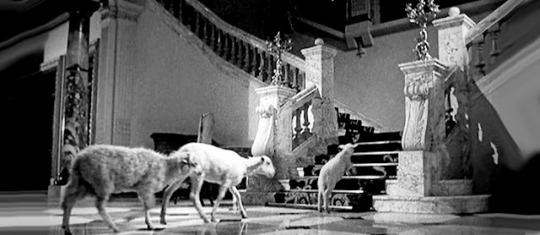
The Exterminating Angel (Luis Buñuel, 1962)
Cast: Silvia Pinal, Enrique Rambal, Claudio Brook, José Baviera, Augusto Benedico, Antonio Bravo, Jacqueline Andere, César de Campo, Rosa Elena Durgel, Lucy Gallardo, Enrique García Álvarez. Ofelia Guilmáin, Nadia Haro Oliva, Tito Junco, Xavier Loyà, Xavier Massé, Ofelia Montesco, Luis Beristáin, Patricia Morán, Patricia de Morelos, Bertha Moss. Screenplay: Luis Buñuel, Luis Alcoriza. Cinematography: Gabriel Figueroa. Production design: Jesús Bracho. Film editing: Carlos Savage. Music: Raúl Lavista. The Exterminating Angel teeters occasionally on the brink of heavy-handed satire -- the sheep entering the now-blocked church at the film's end, for example -- but somehow Luis Buñuel always recovers his balance. I think it's because he knows that surrealism -- the movement which gave him birth -- must always be underpinned by a dutiful semi-documentary realism, that we must never be entirely sure whether the improbable characters we're encountering and the unlikely events we're witnessing are external to us or are products of our own unstable minds. Take the déjà vu effect near the beginning of the film, when we witness the guests arriving at the mansion of the Nobiles and ascending the staircase only to watch the same scene repeated almost immediately from a somewhat different angle. For a moment we wonder if the projectionist has put on the wrong reel or the film editor has forgotten to excise the repeated scene. Or perhaps we wonder if we dozed off for a second and missed something that would explain the repetition. But no, the director must be playing with us, we conclude. That, or we're trapped in his own world, just as he is to trap the guests inside a room later, never bothering to provide an explanation of the force that keeps them there. It's one of those tricks that can only work in the movies, where we, like the house guests, have gathered and found themselves unable to escape. We can choose to escape from the experience The Exterminating Angel presents to us -- nothing prevents us from leaving the theater or turning off the video -- but we don't. So there's much to be said for the observation that the house guests are us, that Buñuel's point is not just that the Spanish bourgeoisie of the Franco years were seething in their own corruption and inertia, but also that we are all trapped by something in our psyches and/or societies that limits and lames us.
7 notes
·
View notes
Text

Little Red Riding Hood and Tom Thumb vs. the Monsters | 1962
#Little Red Riding Hood and Tom Thumb vs. the Monsters#frankenstein#witch#Ofelia Guilmáin#K. Gordon Murray#mexican horror#Caperucita y Pulgarcito contra los monstruos#hammersmith horror#skull#snake#fire#snow white
138 notes
·
View notes
Text

El hombre y el monstruo (1959)
#el hombre y el monstruo#ofelia guilmáin#enrique rambal#1950s horror#1950s movies#1959#rafael baledón#mexican gothic#horrorgifs#gif#my gifs#vampire gif
114 notes
·
View notes
Text
THE BRAINIAC (El Barón Del Terror, 1962) – Episode 138 – Decades Of Horror: The Classic Era
“Possibly the murderer used an electric drill. I say this because the person who did it was quite skilled. Just look at these two orifices.” Okay. Watch out for a killer with skill at orifices. Join this episode’s Grue-Crew – Chad Hunt, Daphne Monary-Ernsdorff, Jeff Mohr, and guest host Ralph Miller – as they check out this Mexican classic while managing to evade the vengeance delivered by The Brainiac (1962).
Decades of Horror: The Classic Era Episode 138 – The Brainiac (1962)
Join the Crew on the Gruesome Magazine YouTube channel! Subscribe today! And click the alert to get notified of new content! https://youtube.com/gruesomemagazine
ANNOUNCEMENT Decades of Horror The Classic Era is partnering with THE CLASSIC SCI-FI MOVIE CHANNEL, THE CLASSIC HORROR MOVIE CHANNEL, and WICKED HORROR TV CHANNEL Which all now include video episodes of The Classic Era! Available on Roku, AppleTV, Amazon FireTV, AndroidTV, Online Website. Across All OTT platforms, as well as mobile, tablet, and desktop. https://classicscifichannel.com/; https://classichorrorchannel.com/; https://wickedhorrortv.com/
In 1661 Mexico, Baron Vitelius is sentenced to be burned alive by the Holy Inquisition of Mexico. As he dies, the Baron swears vengeance against the descendants of the Inquisitors. 300 years later, he returns as a horrible, brain-eating monster to enact his vengeance.
Director: Chano Urueta
Writers: Federico Curiel, Adolfo López Portillo; Antonio Orellana (uncredited)
Producer: Abel Salazar
Selected Cast:
Abel Salazar as Baron Vitelius d’Estera
Luis Aragon as Prof. Milan
Rubén Rojo as Reynaldo Miranda / Marcos Miranda
Rosa María Gallardo as Victoria Contreras (as Rosa Ma. Gallardo)
David Silva as the Detective-Inspector
Federico Curiel as Detective
Germán Robles as Indelacio Pantoya/Sebastian de Pantoja
Roxana Bellini as María de Pantoja (daughter)
René Cardona as Baltasar de Meneses / Luis Meneses
Ofelia Guilmáin as Señora Meneses
Magda Urvizu as Ana Luisa del Vivar (as Magda Urbizu)
Carlos Nieto as Lic. Francisco Coria
Mauricio Garcés as Médico forense / Forensic surgeon
Marco Antonio Arzate as Álvaro de Contreras (uncredited)
The Brainiac is Ralph’s pick. He’d always been intrigued by that weird thing he’d seen in images from the film and knew there had to be a crazy movie there. He also thought it would make for a fun discussion and he was right.
Daphne had seen the Rifftrax treatment of The Brainiac so appreciates watching this fun and ridiculous movie “straight” for the first time. She loves the atmosphere and the mid-century furniture and clothing. What really gets to her, though, is when the Baron eats unrefrigerated brains!
Once Chad saw the hands on the poster as little hairy butts, he was gone. He goes so far as to call The Brainiac the weirdest movie he’s ever seen, and that’s saying a lot. The story’s two police officers, looking like they’re straight out of a Little Rascals episode, just happen to show up at the Baron’s abode with flame throwers. For him, it’s a fun movie. The translation and dubbing in The Brainiac remind Jeff of El Santo and Blue Demon movies, becoming another part of the entertainment.
If you have a hankering to see The Brainiac, also known as El barón del terror, you can stream it from hoopla, tubi, and PlutoTV.
Ralph Miller, the Grue Crew’s guest host, was a special effects artist in the 1980s and early 1990s. To hear more about Ralph’s work and experiences check out these episodes where we discuss Ralph’s work with him:
Interview With Special Effects Artist Ralph Miller III – Episode 155 – Decades Of Horror 1980s
TRICK OR TREAT (1986) – Episode 156 – Decades Of Horror 1980s
FROM BEYOND (1986) – Episode 199 – Decades Of Horror 1980s
Correction: While discussing the Classic Horror Movie Channel, Jeff mentions watching “The Man with the Atomic Brain” on the streaming channel. In reality, the film was Creature with the Atom Brain (1955). He apologizes for the error.
Gruesome Magazine’s Decades of Horror: The Classic Era records a new episode every two weeks. Up next in their very flexible schedule, as chosen by Daphne, will be The Deadly Bees (1966), an Amicus production directed by Freddie Francis.
Please let them know how they’re doing! They want to hear from you – the coolest, grooviest fans: leave them a message or leave a comment on the Gruesome Magazine YouTube channel, the site, or email the Decades of Horror: The Classic Era podcast hosts at [email protected]
To each of you from each of them, “Thank you so much for listening!”
Check out this episode!
2 notes
·
View notes
Photo

Grandes elencos del cine mexicano: El ángel exterminador, 1962, Dir. Luis Buñuel.
Rosa Elena Durgel
José Baviera
Claudio Brook
Bertha Moss
Augusto Benedico
Silvia Pinal
Luis Beristáin
Xavier Loya
Lucy Gallardo
Enrique Rambal
Patricia de Morelos
César del Campo
Rita Macedo
Nadia Haro Oliva
Tito Junco
No aparecen en la secuencia final: Jacqueline Andere & Ofelia Guilmáin
#El ángel exterminador#Luis Buñuel#cine mexicano#Silvia Pinal#Rita Macedo#Claudio Brook#Enrique Rambal#Lucy Gallardo#Jacqueline Andere#Ofelia Gulmáin
12 notes
·
View notes
Photo





La hora marcada es una serie de televisión en México del género de terror producida por Carmen Armendáriz para la empresa Televisa. Se emitió de 1988 a 1990 por el Canal de las Estrellas, con capítulos de media hora los días martes en horario de las 22:00 horas. La serie fue retransmitida de 1997 a 1999 en la programación del Canal 9 y en los canales locales de Televisa en provincia. Su propuesta fue explotar al máximo las posibilidades, el tratamiento visual y argumental de cada uno de sus episodios presentando historias de terror, fantasía e incluso ciencia ficción. La protagonista era "La mujer de Negro", quien representaba a la muerte. Las historias eran sencillas, originales y buscaban generar miedo en sus televidentes.
Hora marcada tiene también reconocimiento por haber sido el proyecto en el que iniciaron trayectoria algunos cineastas mexicanos reconocidos a nivel internacional como Guillermo del Toro, Alfonso Cuarón y Emmanuel Lubezki; así como directores con importantes trabajos en México, entre ellos Luis Estrada y Carlos Marcovich.
Otra de las características que resaltó en la serie fue la incursión de un numeroso reparto que llegó a incluir a grandes figuras del cine y la televisión como Ofelia Guilmáin, Pedro Armendáriz Jr., Marga López, Adriana Roel, Gonzalo Vega, Angélica María, Rosa Carmina, Salvador Sánchez, Patricia Reyes Spíndola y Evita Muñoz "Chachita", entre otros.
34 notes
·
View notes
